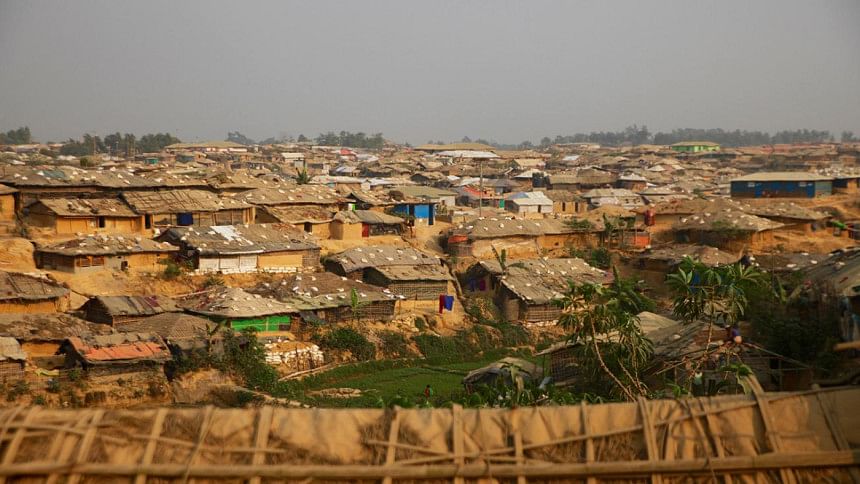Rain hits 11,000 Rohingya people: UNHCR

Torrential rains accompanied by storms hit Rohingya camps in Cox's Bazar, causing 37 landslides and leaving one child dead and several people injured.
"Nearly 2,500 refugee families, with some 11,000 people in all, have been affected," said UNHCR spokesperson Andrej Mahecic at a press briefing in Geneva on Tuesday.
The first heavy rains of the year swept through Rohingya refugee settlements in Cox's Bazar this weekend, marking the start of monsoon season.
"This is an early test for refugees and humanitarian agencies working to support the government of Bangladesh on the response efforts," Andrej Mahecic said.
The spokesperson said based on aerial mapping of the settlements, they estimated that up to 200,000 refugees could be at risk of landslides and floods and still need to be moved to safer areas. Of this population, more than 41,000 are at high risk of landslides.
"But, due to the hilliness of the terrain, limited availability of flat land is a major challenge to relocating the most at risk families. So far, more than 14,000 refugees at high risk of landslides across the settlements have been relocated to safer areas. More land is urgently needed," Andrej said.
According to the Bangladesh Meteorological Department nearly 400 millimetres of rain have fallen in Cox's Bazar area since Sunday.
This is equivalent to two thirds of the average June rainfall for this part of the country, UNHCR said.
The area currently shelters some 900,000 Rohingyas, including 720,000 who have arrived in Bangladesh since August 25 last year.
Bangladesh authorities, UNHCR, the UN refugee agency, and other humanitarian partners responded immediately to the incidents caused by the monsoon rains.
UNHCR spokesperson said interventions included search and rescue operations, relocations and distributions of shelter kits and aid.
"According to damage assessments, more than 1,000 shelters have been damaged as well as ten water points, 167 latrines, one health facility, and one food distribution site," Andrej said.
The rains have also flooded the main road through the Kutupalong settlement, temporarily blocking vehicle access to parts of the site.
UNHCR and partners, working in support of the Bangladeshi authorities, have been working round the clock to try to mitigate risks of landslides and flooding in the highly congested refugee settlements.
"However, given the scope of the refugee population, the sheer size of the settlements and the challenging terrain, we fear that the extreme weather will cause further damage, destruction and potential loss of life," Andrej said.
Andrej went on saying, "While relocations and aid distributions continue we are also prepositioning more emergency supplies, including 10,000 tents, 190,000 tarpaulins, as well as two million water purification tablets, ready for use when needed."
UNHCR also has five hospital tents and emergency health kits stored in permanent warehouses in Cox's Bazar.
In March, the UN launched the Joint Response Plan for the Rohingya Humanitarian Crisis, seeking US$ 951 million in 2018 to meet the immediate needs of more than 880,000 refugees and over 330,000 Bangladeshis in communities affected by the crisis.
"To date, the appeal is just over 21 per cent funded," Andrej said adding that it is critical that humanitarian agencies receive early and flexible funding to save lives and improve the living conditions for refugees during the monsoon season, as well as to continue providing timely assistance and protection.

 For all latest news, follow The Daily Star's Google News channel.
For all latest news, follow The Daily Star's Google News channel. 








Comments